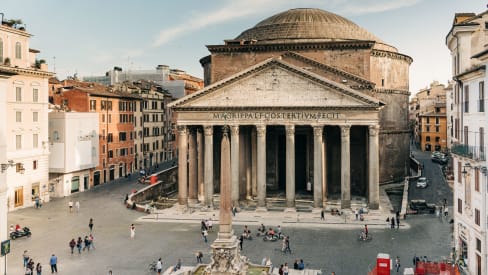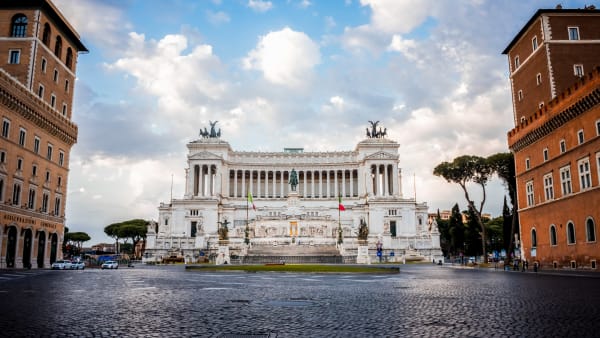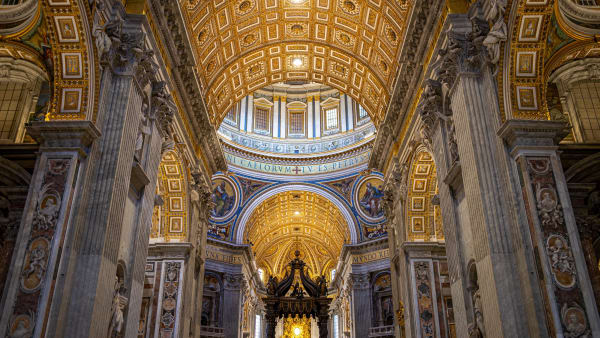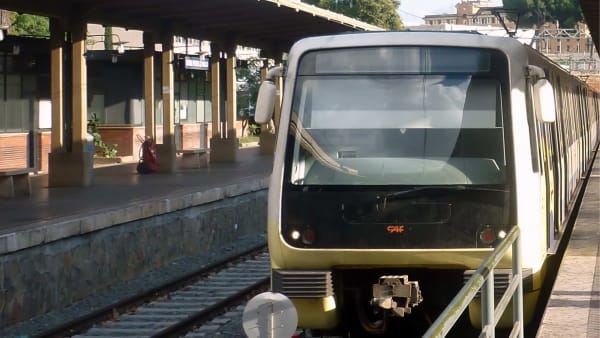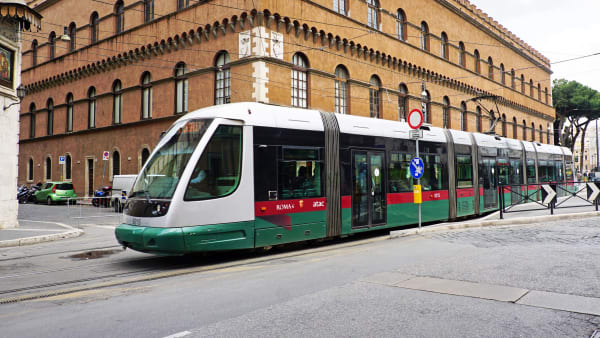Location and how to get there
Location and how to get there
Due to its excellent location in the city center, it’s possible to reach the Pantheon by various means of public transportation or by foot.
By metro
The Pantheon doesn’t have its own metro stop. The nearest station is “Barberini” on line A, which is about a 15-minute walk from this fascinating monument.
When you leave this station, you should follow Via del Tritone and then continue along Via in Arcione. This way, you will also pass by the Trevi Fountain.
The cost of a single ticket (BIT) to travel on the metro is €1.50, but it’s also possible to purchase 24, 48 or 72 hour passes, among others.
See more details about the subway in Rome.
See detailed information on tickets and passes for public transportation in Rome.
By tram
The Piazza Venezia stop on line 8 is about 700 meters from the Pantheon. From there, it’s possible to reach this monument walking along Via Aracoeli to the north in about 10 minutes.
Rome’s trams use the same tickets and passes as the metro and buses. A single ticket costs €1.50 and there are also passes available.
See more details about Rome’s trams.
See detailed information on Rome’s public transportation tickets and passes.
By bus
Public buses are undoubtedly the means of transportation that offer the most options in Rome.
It’s possible to reach the Pantheon with several lines. Lines 30, 70, 81, 87 and 628 stop at Rinascimento, 350 meters west of the Pantheon. On the other hand, lines 62, 83, 85, 160, 492 and 628 stop at Corso/Minghietti, also 350 meters away, but to the east of the Pantheon (a 4-minute walk).
| Line |
|---|
| Nearest stops* |
| Itinerary |
| Line | 492 | 628 | 30 | 70 | 81 | 87 | 62 | 83 | 160 |
|---|---|---|---|---|---|---|---|---|---|
| Nearest stops* | Rinascimento or Corso/Minghietti | Rinascimento or Corso/Minghietti | Rinascimento | Rinascimento | Rinascimento | Rinascimento | Corso/Minghietti | Corso/Minghietti | Corso/Minghietti |
| Itinerary | It crosses Rome from east to west, connecting the Cipro Metro station with the Tiburtina station. | This line crosses Rome in a north-south direction, following the course of the Tiber as far as the Tiber Island. | It also crosses Rome in a north-south direction. | It makes a short tour through the center of Rome, from Clodia to Giolitti. | It crosses Rome from the Vatican, in Piazza Risorgimento, through Piazza Navona and the Pantheon, to Malatesta, an area outside the historical and tourist center of Rome. | It runs northeast (Colli Albani) - southwest (Giulio Cesare/Lepanto), stopping at Rinascimento. | It connects Tiburtina station with Castel Sant’Angelo in the west of the city. | It connects the northeastern and southern suburbs, passing through the center of Rome. | It crosses Rome from north to south, linking Villa Borghese with Montagnola. |
Rome’s city buses use the same tickets as the metro, trams and suburban trains. Therefore, the cost of a single bus ticket (BIT) is always €1.50. As mentioned above, passes are also available.
See details on the buses in Rome.
See detailed information on Rome’s public transportation tickets and passes.
By taxi
Cabs are obviously the most comfortable option, but they are also the most expensive and are not guaranteed to be the fastest way to get to the Pantheon due to the heavy traffic in the central area of Rome.
However, this means of transport is a good option if you feel like chatting with a cab driver, who can tell you a few secrets of the city or entertain you with his typical Roman humor.
The best way to get a cab in Rome is to book it by phone, mobile apps or simply by going to a cab stand.
By foot
Walking is undoubtedly the option that ensures you enjoy the monumental beauty of the Eternal City to the fullest. Being close to many of Rome’s other monuments, the Pantheon can easily form part of a stroll through the city center.
Thus, you can take the opportunity to visit Piazza Navona, the Pantheon, the Trevi Fountain, Hadrian’s Temple and many other architectural gems, such as the Church of St. Ignatius of Loyola, in the same day.


